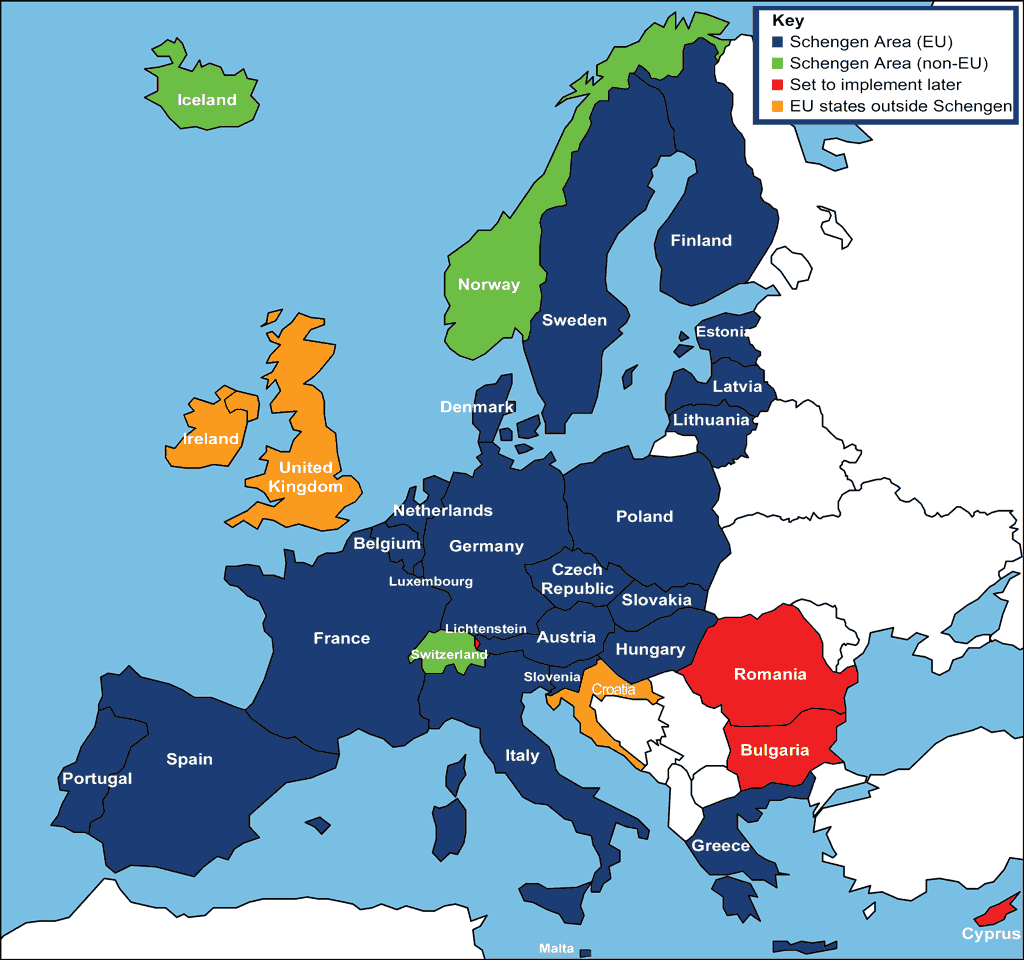Almost all of Europe can now travel with one visa
Yesterday 9 new countries joined the Schengen agreement.
Now Schengen includes 24 European countries. Among them – Italy, France and Spain, beloved by our tourists, the main ski nation – Austria. And the newcomers to the treaty – the Czech Republic and Hungary, for example – are very popular with Russians and Ukrainians. How does the expansion of the common visa space come across to us?
The meaning of the Schengen agreement is that you can freely travel to other Schengen countries with a visa from any of its member states.
Here is an example: you bought a ticket to France, received a single entry visa (these are usually the ones that are put in the passport for tourists). With it, you can easily travel from Paris to Amsterdam by train – no one will ask for documentation. Now, thanks to the expansion of Schengen, it will also be easy to travel almost throughout Europe! From Poland to the Czech Republic, from the Czech Republic to Hungary, from Hungary to Austria …
Many sightseeing tours in several countries should be 50 – 70 euros cheaper. Previously, for such a popular program as Vienna – Budapest, you had to get two visas and pay a consular fee for each. And now one Schengen is enough.
Do you want to take advantage of the “bloated” Schengen already in the New Year holidays? Keep in mind:
if you bought a tour and applied for a visa to one of 9 newcomer countries before December 21, then the visa in your passport will be still old, “internal”. Say Czech. Alas, they will not let you into neighboring Slovakia or Hungary, despite the fact that officially these countries will already be in a single visa space;
Do you have a valid multiple entry visa from one of the old Schengen countries? For example, Finnish or French. With her, you can safely go to New Year in Riga or Prague;
passport control was canceled on December 21 at the land borders between the old and new Schengen countries. That is, in trains and on highways even documents will be checked for. But they will be at the airports until the end of March.
What is good for a European is not very good for a Russian tourist
Nine Eastern European countries have joined the Schengen agreement from today. Among them, countries popular among Russian tourists – Hungary, Latvia, Lithuania, Estonia, the Czech Republic and the closest neighbor through which many tourists transit to Europe – Poland.
It will take more documents to apply for an overgrown Schengen visa, and they will be looked at more carefully.
The press secretary of the Federal Agency for Tourism of Russia Vladimir Egorov spoke about what will change from today in the travel industry.As in any situation, there are, as it were, two sides of the coin, that is, what will be good for our tourist, and what will, frankly, not really. On the one hand, all the expanses of the Schengen space are opening up before us. On the other hand, of course, tourists will be faced with the fact that obtaining visas will be much more difficult. In order to get into the Schengen area, there are, as it were, certain clear requirements even for the same photo as the background should be for this photo. Suppose those who recently traveled to the Czech Republic remember very well that there can be any kind of background, but it was agreed how much area a person should occupy. All these nuances by and large passed. Now all this will be very clearly stipulated for the execution of other documents. As a matter of fact, it is practically the same for all Schengen countries. There are small nuances, but, naturally, there will be more documents, and they will be examined more carefully.
– Tell me, as for the registration of Schengen visas. What is changing here?
– There is an agreement that says that the visa must be issued within 10 days. But again, some missions interpret it in their own way. It is believed, let’s say, that 10 days is from the moment the documents turned out to be at the consulate’s specialist and right before the issue. But we know very well that in some embassies you must first register as well. In difficult peak seasons, only after a month, or even one and a half, you can submit your documents. These 10 days stretched earlier by 1.5 months.
It is probably worth paying attention to such a nuance. Those who received visas before the entry of a country into Schengen, he received a national visa and entered its territory. These national visas will work for another month. But you cannot travel on this visa throughout the Schengen area. Accordingly, if you get it to a particular country, you are only traveling in that country.
As for visa processing, when you travel to several countries. Here, too, sometimes there are certain problems. On the one hand, for example, if you are going to the same Germany, it is logical that you go and get a German visa.
There are no options. But if, for example, you travel in transit through other countries, especially with regard to bus tours, here again, every embassy, consular service considers this in different ways. Someone interprets which country you will be in more. Someone is trying to transfer to their colleagues – to the country through which you will enter. There is no single, universal model to the end. This is a problem that, in general, our tourists, unfortunately, encounter.
This post is also available in:
 English
English  Русский (Russian)
Русский (Russian)






